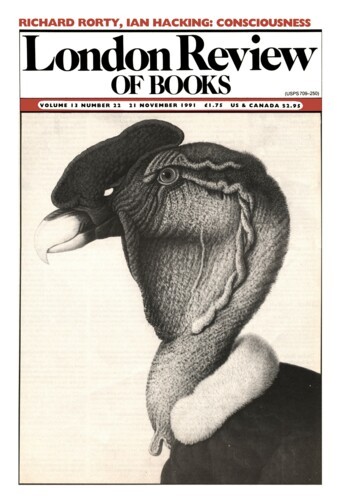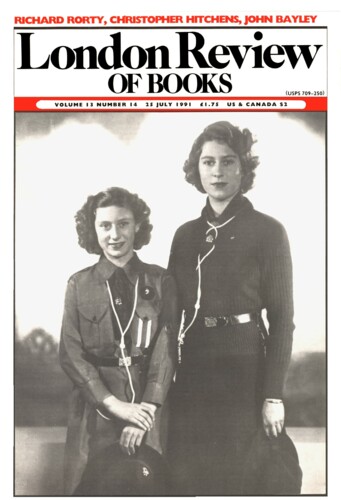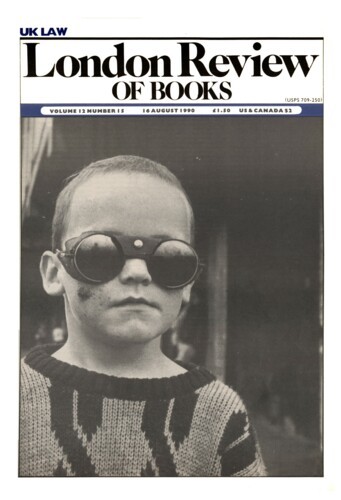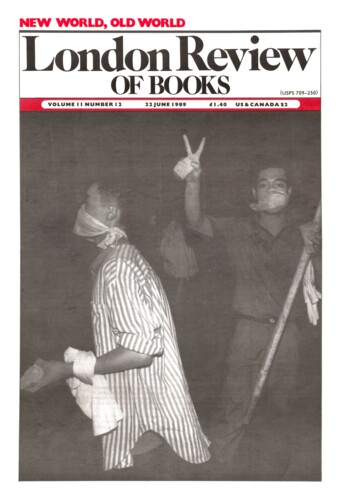Things that are worth naming
Linda Colley, 21 November 1991
Among the illustrations in this book is a painting by John Closterman of the Marlborough family which hangs today in Blenheim Palace. On its right-hand side, as convention dictates, sits the head of the family, John Churchill, at the time of the painting, first Earl of Marlborough. On its extreme left, at a slightly lower level, stands his only surviving son and heir, the ten-year-old Lord Blandford. Each of them is shown gesturing to the other, presumably because the artist wanted to create a connection in the spectator’s mind between the author of the family’s grandeur and the source of its future hopes. But the effect is to carry the eye to the very centre of the work, to the figure of Sarah Marlborough.





